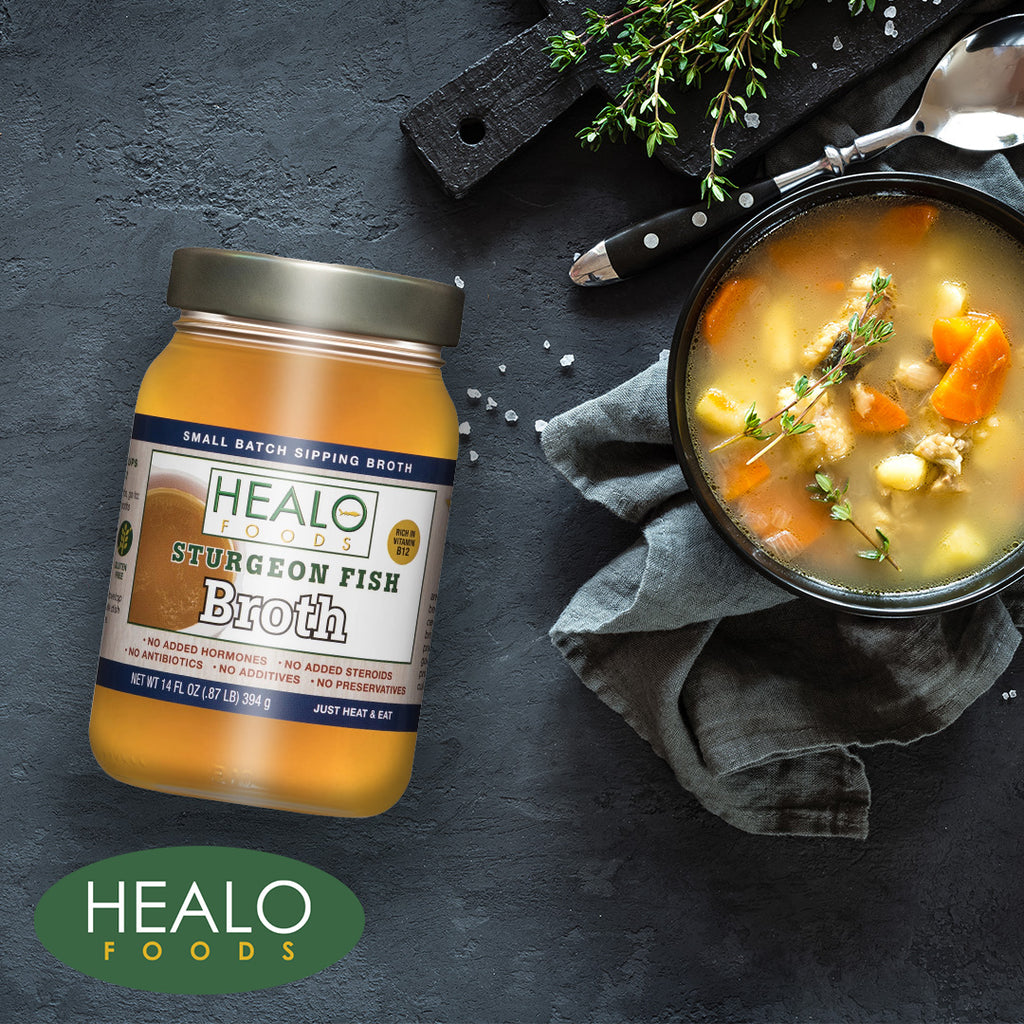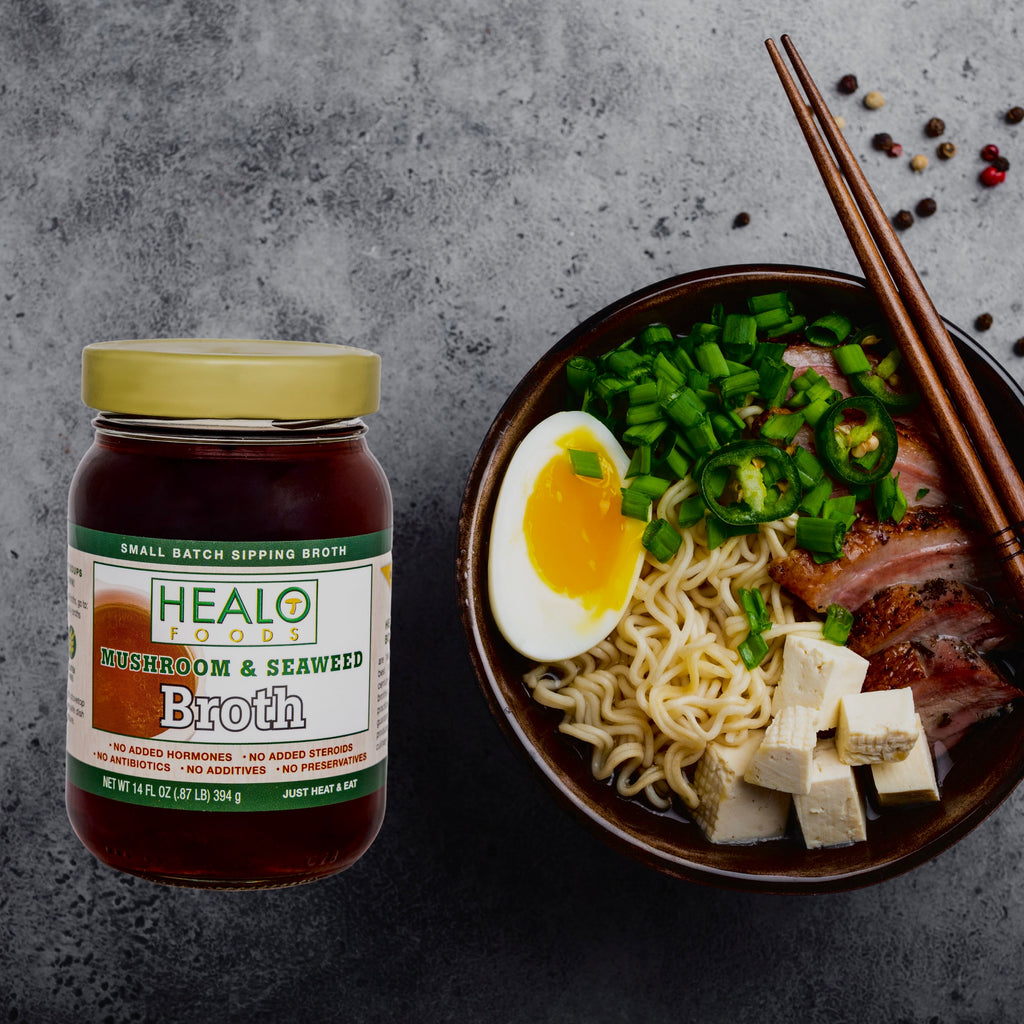In the realm of culinary enrichment, the unequaled contribution of a superior broth cannot be overstated. Nevertheless, not just any broth is sufficient. It necessitates an infusion that delivers both robust flavor and nutritional benefits in abundance. This is where beef bone broth distinguishes itself. Its role transcends merely providing liquidity to a meal; it has the capacity to offer a depth of flavor that water fails to emulate.
However, there's no denying that crafting bone broth from scratch demands considerable time investment. Consequently, many individuals resort to pre-made alternatives available in stores. But how does one discern which option to purchase? Given the multitude of choices lining grocery store shelves, it can easily become daunting. For this reason, we have compiled this comprehensive guide to bolster your confidence as you traverse through the maze that is the broth aisle.
Bear in mind that the finest bone broth doesn't merely deliver on taste but also serves as a rich source of nutrients. Therefore, without further ado, let us explore and identify the optimal store-bought bone broth for your gastronomic requirements.

What makes the best bone broth?
Now that we've established just how beneficial bone broth can be for our bodies, let's discuss what exactly makes a quality version of this nutrient powerhouse. Remember, not all store-bought broths are created equal. The best beef broth isn't necessarily what's most conveniently located in your local grocery aisle.
Quality certainly plays a significant role in the bone broth selection process. It's important to opt for a broth that's grass-fed and organic whenever possible. This is primarily because the making of bone broth involves simmering bones with water, which leaches all the nutrients, collagen, and protein out of the bones. Therefore, when the source is high-quality, it ultimately translates to a richer, more nutritious broth.
Moving on to the types of bone broth, we've got a variety available to choose from ranging from chicken, beef, turkey, to even bison broth. For a hearty, meaty broth, beef is the way to go. However, if you're not big on red meat, there are poultry-based chicken or turkey broths that still deliver the protein and collagen punch that bone broths are lauded for.
Packaging is another aspect that often gets overlooked. There're a variety of packaging options out there – shelf-stable, frozen, or fresh. This is worth considering given how frequently you use broth, the quantity you require, and the storage space that's available to you. If you're someone who has bone broth on the daily, buying bulk might be the most budget-friendly option for you. Especially if you can store it in the pantry or the freezer.
At this point, it might be useful to make a notebook of this information, or even save a link to this post. With these insights, you'll have a better understanding of how to choose high-quality, nutritious beef broth – an improved experience in both your kitchen, and overall health.
Benefits of Bone Broth
Let's talk about why bone broth deserves a spot in your kitchen. Boasting a wealth of nutrients, bone broth brings to your table more than just a rich flavor and versatile usability. From amino acids to collagen, these elixirs hold a treasure trove of health benefits.
First and foremost, quality bone broth is low in sodium. This crucial attribute leads the way in making it a healthy choice, particularly if you're keen on monitoring your sodium intake. A single serving of bone broth usually contains 300 to 350 milligrams of sodium, representing approximately 13 to 15% of your daily value. But, that's not all. Bone broth's nutrient profile extends well beyond sodium.
Ingredients play a significant role in the health benefits of any bone broth. Grass-fed beef and organic ingredients clearly stand out in this regard. The quality and sourcing of these ingredients significantly impact nutrient density, leading to a richer, healthier broth. So, when you settle for that high-quality, low-sodium, grass-fed beef bone broth, you're not just making a great culinary decision, but also paving the way toward a healthier lifestyle.
However, despite the undeniable health advantages, one must remember that bone broth is low in calories. Weighing in at around 45 calories per one cup serving, it's not ideal as a meal replacement. But when incorporated into your meals - like soups, stews, or even used as a stock replacement - bone broth can help you introduce additional nutrients into your diet seamlessly.
A word to the wise, though. Not all bone broths are created equal. Packaging, preservation, and ingredients can make a world of difference when it comes to both taste and nutrition. Look out for a product with a low and slow preparation process. This ones will likely bring you the most nutritional punch.
Finally, let's touch on the longevity of bone broth. On average, most bone broths, whether homemade or store-bought, can only stay fresh for up to two weeks in the fridge. However, some concentrated forms of bone broth boast an impressive shelf-life of six months. Such options not only save you frequent trips to the grocery store but also cut down on waste.

Factors to Consider When Buying Bone Broth
Let's tackle some of the most important elements you should think about when selecting the bone broth to bring into your kitchen or to include in your daily diet.
Ingredients to Look For
When reading the ingredient list, either bones or bone broth should take the lead. Notice how many brands list collagen, bone broth protein, or concentrates. While they might sound formidable, in reality, they're just filler ingredients to boost protein. Sadly, some brands advertise such broths as "real" when they're not. Aim to see words like "chicken bones," or "chicken bone broth" early on in the ingredient list. Any reputable brand will have at least 8 grams of protein per 250ml serving. I'd side-eye any products with less.
|
Serving Size |
Protein per Serving |
|---|---|
|
250 ml |
At least 8 grams |
Packaging and Shelf Life
Aim for convenience with a decent shelf life. Consider broths that tend to last longer, without compromising on the quality. Some concentrated broths even offer a consistent and rich taste that can stay fresh up to six months! Also, look out for packaging that's environmentally friendly. Let's sip our broth guilt-free, knowing that we're being kind to our bodies and our planet.
Organic vs. Non-Organic
While consuming organic foods is a lifestyle choice, for bone broth in particular, We'd definitely opt for organic. The main difference is the source of the bones. Try to go for broths made from grass-fed and finished beef or pasture-raised chicken or turkey bones. They usually offer a taste that's richer and a nutrition profile that's more appealing.
Quality
Quality is crucial. Some brands use cheap filler protein sources and misleading labels to seem more attractive than they really are. Always scan the ingredient list carefully, paying attention to the source and type of protein listed. Also, keep in mind that low sodium content adds to the quality of bone broth, it allows the taste of beef and spices to take center stage, and it's healthier.
Type
Bone broth can be prepared with a variety of different ingredients, so the type of broth you choose depends on your preference. Beef and chicken bone broths are the most common, but you may also find broths made with fish bones. The flavor and nutritional content can vary depending on the type of bones used, so you may want to try a few different types to see which one you prefer. Additionally, some broths come in powder form which gives you the flexibility to adjust the intensity of the flavor and the consistency by tweaking the amount of powder you use.







